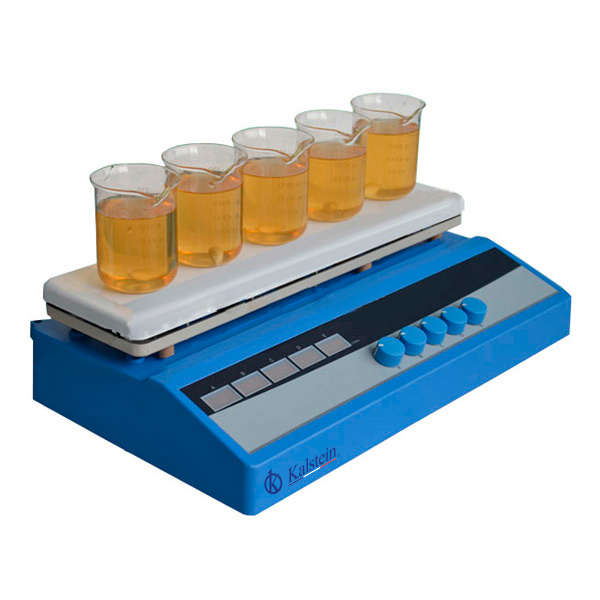Heating plates are one of the instruments that can be found in almost any laboratory of biology, biochemistry, chemistry and food, among others. Its main utility is the ability to quickly heat different samples, for different purposes, from chemical reactions to dissolution of substances.
The importance of heating plates lies in that they can heat quickly, safely, reliably and reproducibly to different substances, especially those which by their properties are flammable, in which the use of a burner Bunsen is discouraged. In addition, current equipment incorporates the shaking function that extends its application spectrum.
These instruments are designed in such a robust way, both from the point of view of housing materials that are resistant to both high temperatures and aggressive chemical means, as from the electronic point of view. Likewise, the electronics, sensors and means of visualization of the conditions of heating and stirring, allow a simple handling of these equipment.
How are the heating plates designed?
One of the main design features and also advantage of the heating plate is that, in addition to electricity and an appropriate work surface to place it, no other particular requirements are needed for its commissioning in the laboratory. Among other features, the plates are characterized by:
- Compact design, as many are easy to carry.
- Generate heat quickly and reproducibly.
- Precise control of heat and agitation speed.
- Robust Electrical and Electronic Components.
- Chemical resistant housing commonly used in laboratories.
Additionally, due to their design, these devices are very easy to maintain and clean. However, special attention should be paid to corrosion problems, which can degrade both the thermal element and the internal electrical elements. Although these instruments are designed to prevent spills of substances from entering the inner compartment, this should be avoided at all costs to increase shelf life.
What materials is the heating plate made of?
The heating plate is an instrument that has many uses in any laboratory for uniform heating, at precise and sustained temperatures of many types of samples, solutions and materials, without the risk of using open flame heat sources. To do this, these devices use a surface that is heated to a temperature that can be regulated.
One of the most commonly used materials to make the plate is stainless steel with ceramic coating. This enables it to reach temperatures of up to 550 °C, with excellent mechanical resistance. Aluminum plates coated with ceramic are also common. Plates that have exposed surface, i.e., metal (steel, iron or aluminum), make them susceptible to corrosion, so ceramic coating is desirable.
In general, the outer layer is covered with stainless steel and other materials, such as an epoxy resin that provides a tough and protective covering of the metal surface. Additionally, the thermal conductivity plate and electric heating wire as heating material for soft mica plate and other materials that serve as thermal insulation.
What are the electronic elements that allow rapid heating?
In addition to providing visual elements (such as LED displays and scales where agitation and temperature are graded) that allow setting the set point and display of the actual value of temperature and speed, as well as time, they also incorporate electronic parts that support all these functions.
One of the parts of these equipment are sensors that ensure the best possible temperature control accuracy and stirring speed. Although many of these instruments regulate by logical circuits temperature and agitation, circuits can also be incorporated that measure the conditions reached, allowing the incorporation of manual or automatic adjustments.
Kalstein heating plates for laboratory work
The manufacturer of laboratory instruments Kalstein, is characterized by designing robust, durable, state-of-the-art equipment of the highest quality. An example of this is the heating plates. They include a lightweight and durable aluminum housing, some models incorporate digital displays for easy viewing of temperature and stirring, and a ceramic-coated aluminum plate with the benefits listed above. For purchase, prices and other technical details you can consult the links HERE and HERE




